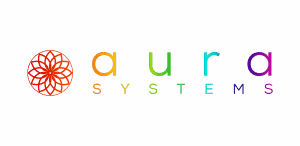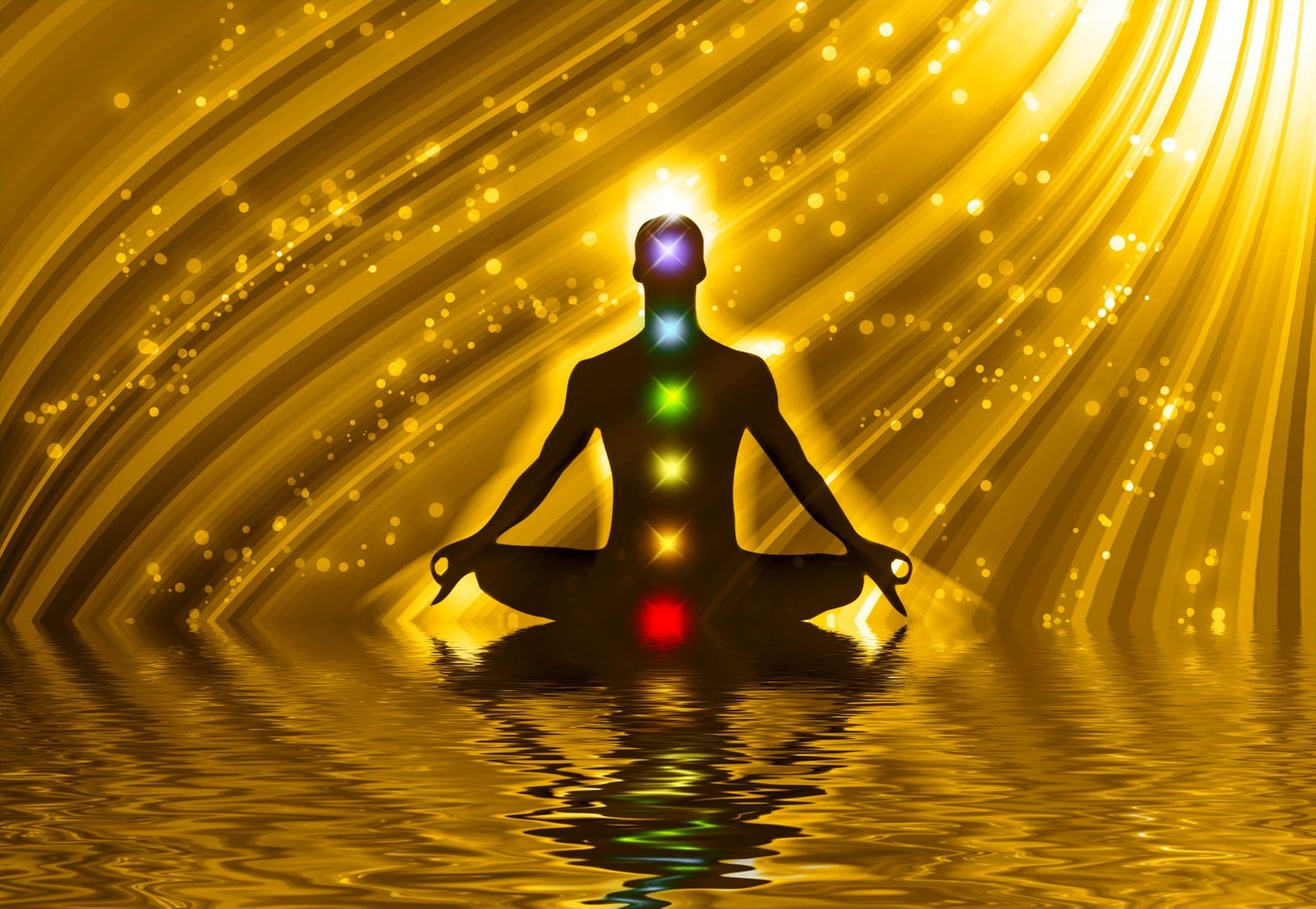
Auras are considered to be a human energy field projection surrounding each person. In essence, auras are an outward reflection of your spiritual state of being. Your aura may embody your thoughts, your dreams, and even your desires.
A multitude of colors compose these ethereal energy fields. However, there’s typically one dominant hue. That color reflects your most prominent traits.
Please note: This article is written according to the principles of metaphysical thought.
It’s important to understand that auras are not static. Rather, they change based on internal and external conditions. Humans are dynamic, complex beings, so it naturally follows that auras are just as intricate and multi-faceted as we are.
Aura colors appear simple at the outset. They may be red, orange, yellow, green, purple, white, and blue. The variations in color, however, uncover deeper revelations. Aura colors may appear unadulterated and true, or slightly muddied and faded. Both the quality of the color and the color itself may signify different elements of a person’s true nature.
So, what do aura colors mean? Each color is associated with different energies, traits, and an overall sense of self. Before deciphering the colors though, it’s important to cultivate a deeper understanding of auras as a spiritual concept.
Aura Fundamentals

Teachers, healers, and philosophers who subscribe to metaphysical thought assert that each human possesses an energy field. The aura is a rainbow of colors. These colors are associated with the seven chakras of the body.
Aura colors are each imbued with different meanings. These may reflect different, ever-changing conditions of your state of being. Auras can change surprisingly quickly. For example, you may start your day off with a blue aura, which denotes a calm mental state. But, by the end of the day, life’s irritations have built up, and you may radiate a red hue of agitation.
The aura is thought to be composed of seven different auric bodies or layers. These are often called ‘subtle bodies’. They surround your physical, material self.
Each of those seven auric levels has its own vibrational frequency, and these different frequencies can have a push and pull affect on each other. As a result, if one layer of the aura is out of alignment, guess what? The other auric bodies will become unbalanced as well.
The Seven Auric Bodies
There are seven auric bodies that comprise your aura as a whole.
Each part of your aura serves a different purpose:
1. Physical Auric Body: Physical sensations such as comfort and pleasure.
2. Etheric Auric Body: Attitude regarding the self such as self-love and self-acceptance. This level reflects the nature of your inner self.
3. Vital Auric Body: The rational, logical thinking part of your mind. This auric body helps to rationally understand different situations.
4. Astral Emotional Body: This level determines how you approach your relationships with other people.
5. Lower Mental Auric Body: Connection to the higher self or divine. This body represents the drive to follow a greater truth beyond the material world.
6. Higher Mental Auric Body: Divine love and spiritual joy.
7. Spiritual Intuitive Body: Understanding greater universal purpose and patterns.
What Does an Aura Look Like?
Metaphysicians and holistic healers believe that an aura presents as an egg-like cloud that completely surrounds an individual in a colorful haze. No two auras are alike. They vary in color distribution, quality, and intensity.
So, what can you deduce about a person, once you see a representation of his or her aura? Keep reading to dive into the most common aura colors and their meanings.
Aura Color Meanings
Aura colors may indicate your personality and spiritual progress. That said, the colors themselves are just the tip of the iceberg. Arriving at a full understanding of your true self is a lifelong journey.
By themselves, aura colors mean nothing without an accurate aura color interpretation. This service may be provided by people who follow spiritual traditions or holistic healers. Knowing how to analyze your own aura is both a skill and an art, but you can use the guidelines below for a basic understanding.
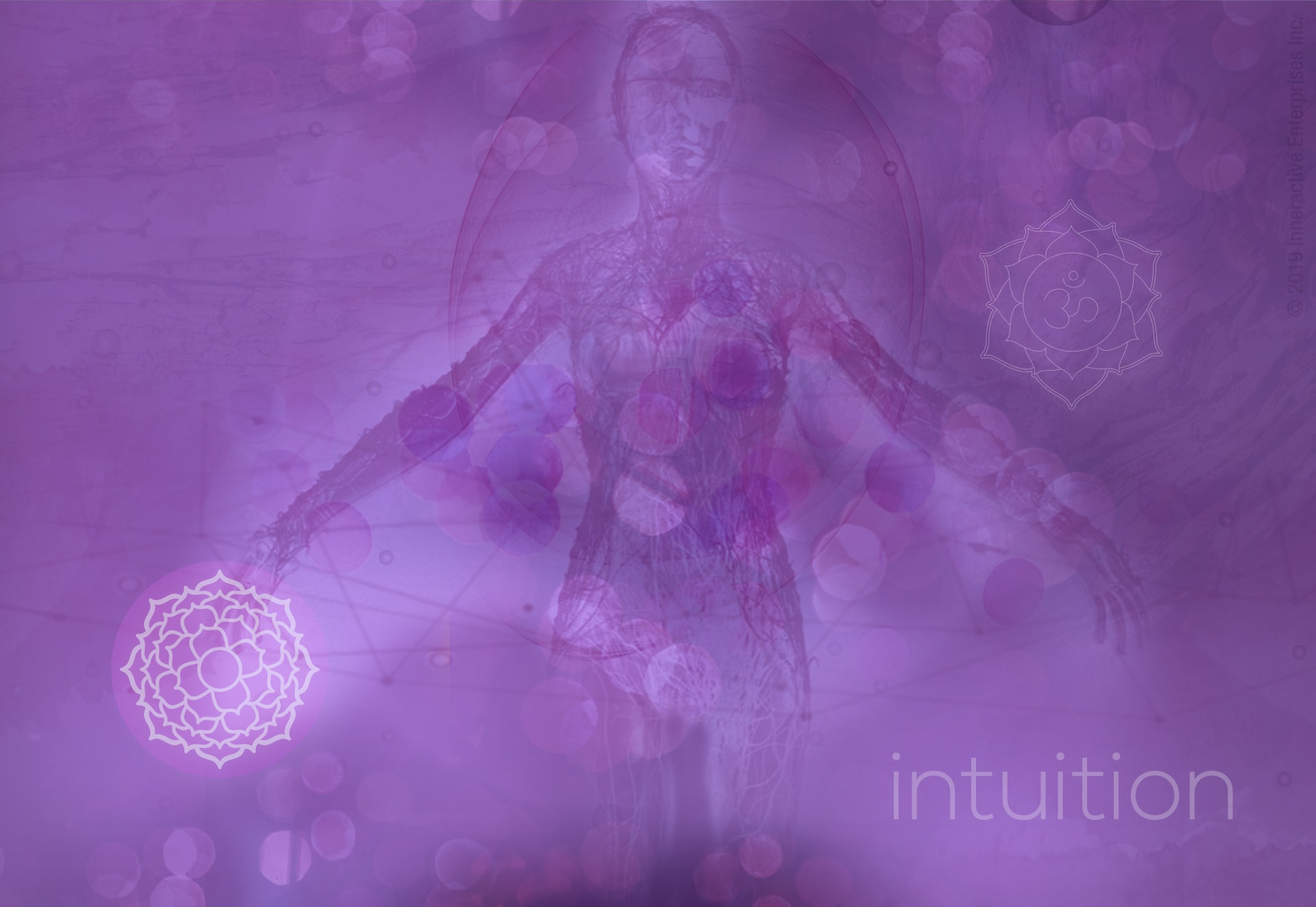
Violet Aura Color Meaning
The violet aura color is associated with deep spirituality. Violet-dominant individuals are generally in tune with the emotions and moods of others around them. They also exhibit a deep connection to nature and animals that is unique to this aura color.
Those with violet auras are sensitive people who are both mysterious and secretive. They have almost an unlimited potential for both personal and spiritual growth.
In general, they love to learn and explore which makes them interesting and knowledgeable. With other people, they serve as empathetic channels and often unconsciously pick up the thoughts and desires of those around them—especially strong emotions.
Despite being able to easily ascertain the intent of other people, those with violet auras are often unreadable themselves.
Violet Aura Weaknesses:
Those with violet auras often have trouble establishing boundaries with themselves and others. Sometimes, they can be unsure of what to say or how to act on unconscious signals they pick up from other people. This can mean they have issues with romantic partners as well as friendships in terms of communication and trust.
Violet Aura Strengths:
Individuals with a purple aura have high levels of empathy which make them innate people-magnets. Others who spend time with a violet aura may feel like he or she understands them in ways that others simply do not.
In the workplace, violets do best in humanitarian non-profits or careers that better the lives of animals. However, they must be careful not to get burned out giving too much of themselves to their job or relationship.
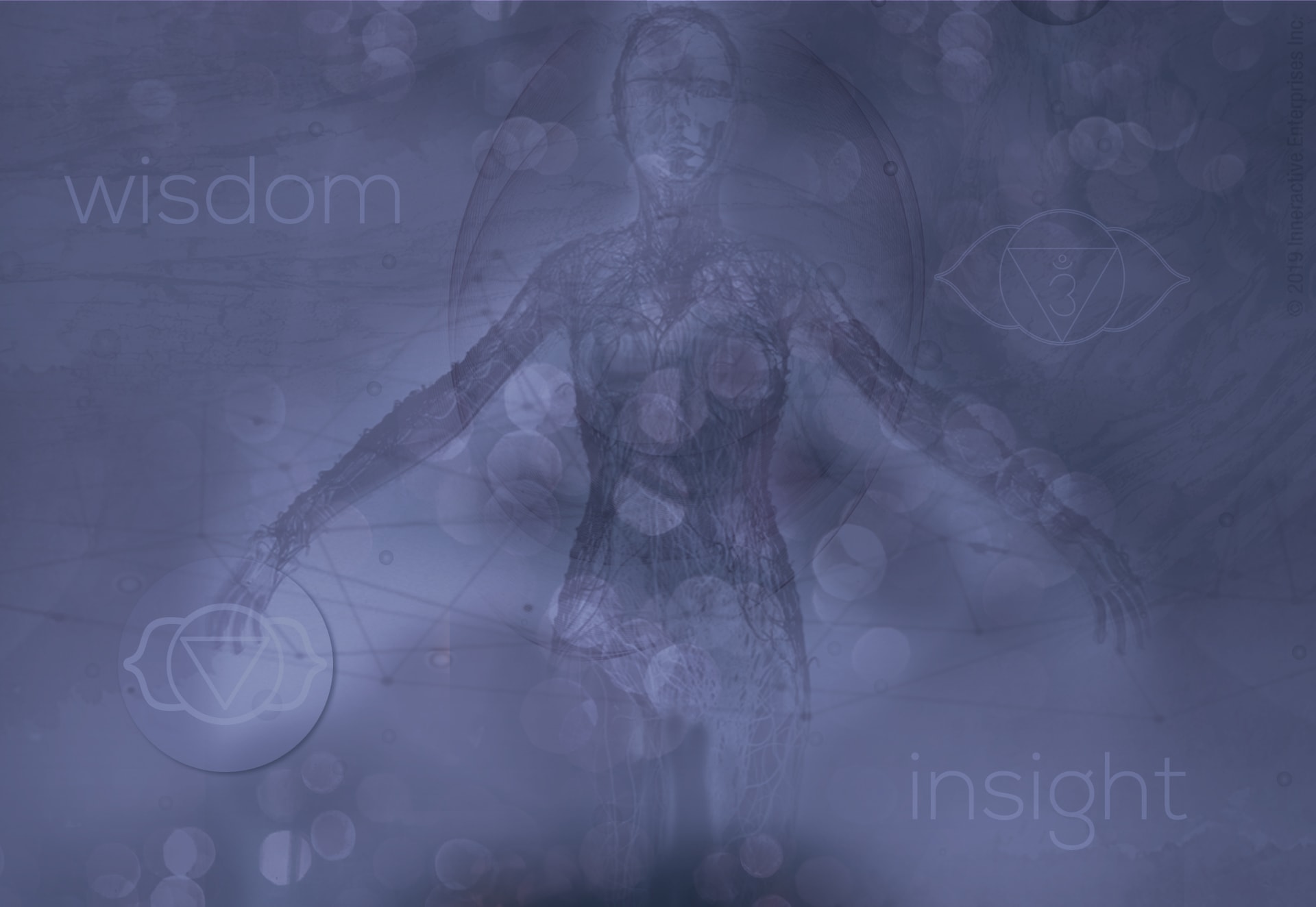
Indigo Aura Color Meaning
Indigo relates to intuition and inspiration. People with indigo auras tend to be extremely sensitive to others’ energy.
They are sensitive and empathetic beings, and base their decisions on the deep depth of their feeling. Those with an indigo aura rely heavily on intuition, but can quickly – and correctly – discern between illusions and truth.
Indigo Aura Weaknesses:
Those with dark, murky indigo in their aura may be experiencing self-doubt, and could find themselves disconnecting with their intuition.
Indigo Aura Strengths:
Because they’re highly communicative and able to connect with others easily, individuals with indigo auras may help lead others to understand and appreciate the beauty of the world around them.
When it comes to professional endeavors, indigo auras should work somewhere where their empathetic nature can do the most good.
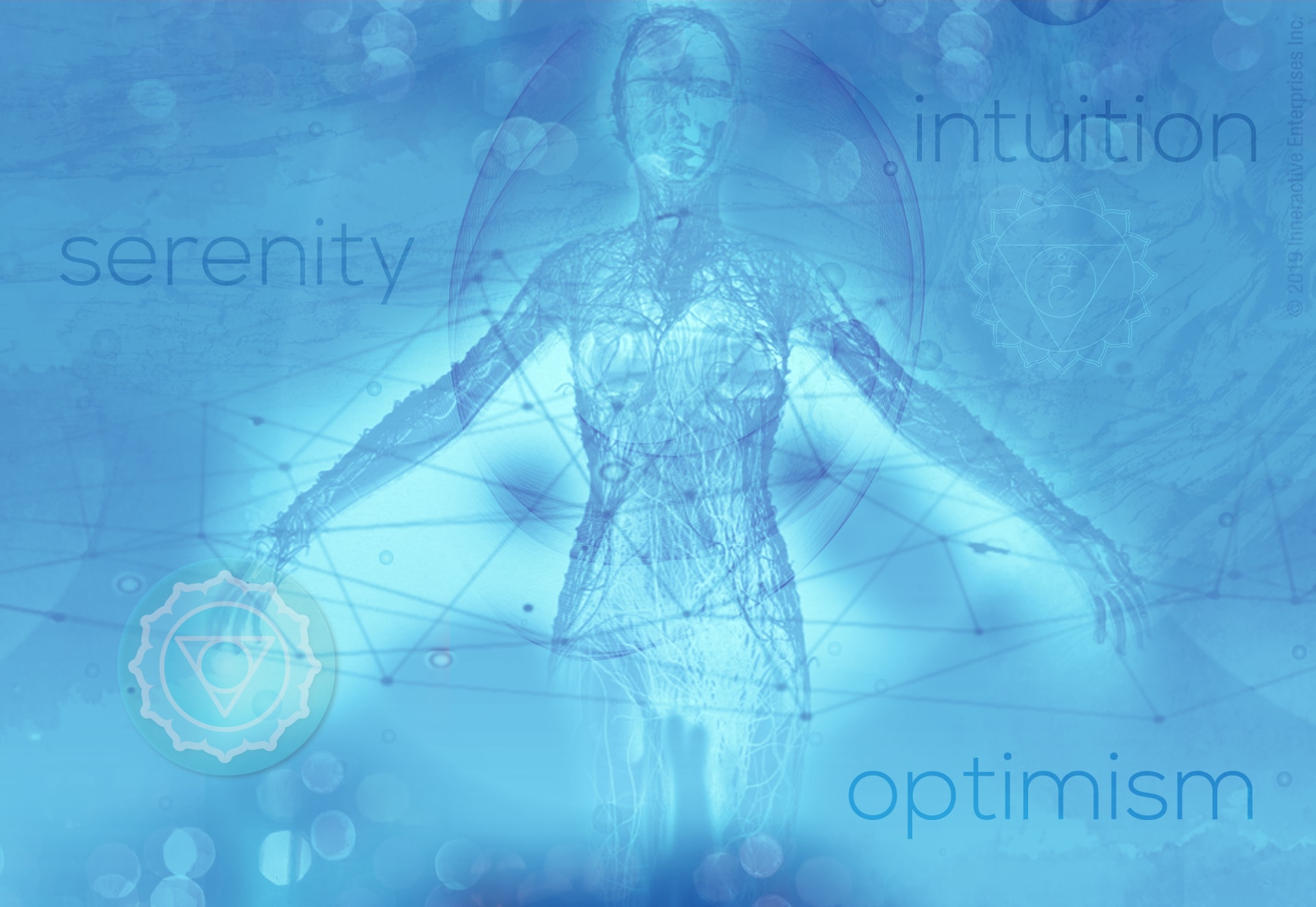
Blue Aura Color Meaning
A blue aura color usually denotes a calm, sensitive nature. Honesty, self-expression, compassion, and communication are all inherent to blue-dominant people.
However, those with blue auras can be very different from one another. Just as there are many shades of blue, there are many different types of blue auras that reflect a variety of traits and characteristics.
Blue Aura Weaknesses:
Individuals with blue auras can be workaholics and take on too much at once. They can also be scared by their own sensitivity and resist vulnerability, making it hard to get to know them on a deeper level.
Blue Aura Strengths:
Those with blue auras are usually masters at communication and can easily convey thoughts, ideas, views, and concepts to friends and strangers alike.
Blue-dominant individuals are the peacemakers of the aura-spectrum. It’s common for writers, poets, and politicians to have blue auras.
Variations of blue auras:
- Turquoise: compassion, healing
- Royal Blue: sensitive, generous, open, empathetic
- Sky Blue: positive energy, peaceful
- Cloudy/Muddy Blue: fearful of honesty and openness
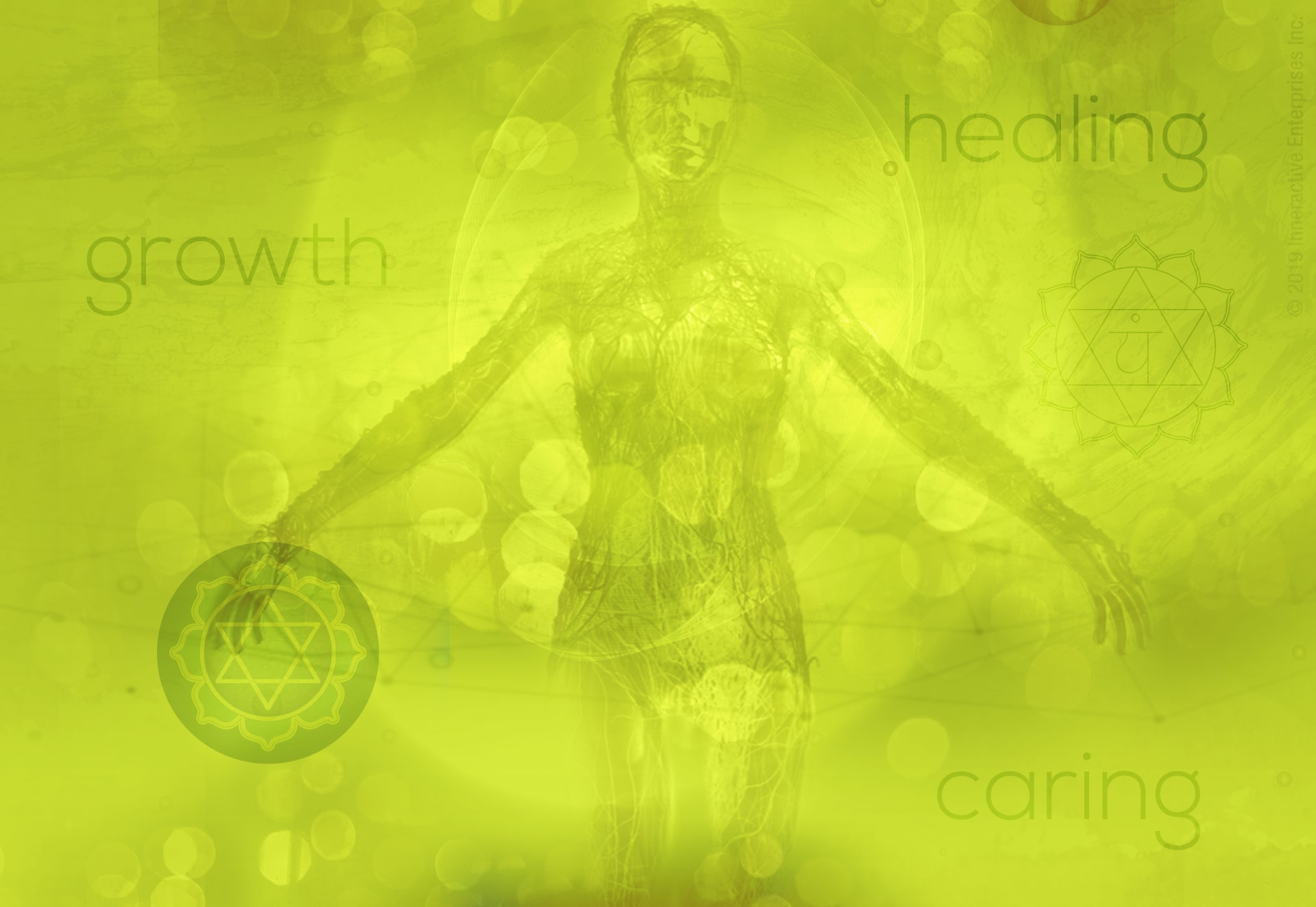
Green Aura Color Meaning
Green: the color of plants, growth, and change. Similar to these common color connotations, those with a green aura effortlessly transition through life and handle change well.
Individuals exhibiting green auras are usually perfectionists who are determined and down-to-earth. They tend to stay away from unrealistic ideas and do well with friends and romantic partners who match their relaxed characteristics.
Because green is also the color of the outdoors, those with a green aura usually have a close connection to nature.
Although greens are creative, their creativity may not manifest in traditional ways such as painting or drawing. Instead, someone with a green aura may find more practical ways to follow their creative energies. For example, they might enjoy crafting the perfect aesthetic: their appearance, clothing, home decor, etc.
Greens are the “balancers” of the aura spectrum; they help maintain balance in themselves by adapting to change and act as mediators in personal relationships.
Green Aura Weaknesses:
A lack of patience often defines those with green auras—sometimes, they spend their energy on the wrong task, person, or concept. It is difficult for green-dominant people to be decisive about what they want, so they change their goals often.
Because of their role as mediators, they can sometimes get drawn into the drama of others’ interpersonal conflicts and get worn out by their constant effort to play the referee
Green Aura Strengths:
Individuals with green auras have a strong creative drive often showcased in gardening, cooking, and decorating their home.
In the workplace, they make successful business people because they’re planners who don’t often make rash mistakes. They also tend to be popular and respected by both coworkers and close personal friends.
Variations of green auras:
- Bright Green: healing, harmony, love, minimalist
- Yellow-Green: communicative, artistic, creative
- Forest Green: jealousy, anger

Yellow Aura Color Meaning
When you think of the color yellow, you might imagine the sun, sunflowers, and cheerfulness. People with yellow auras usually have traits closely related to the connotations surrounding this happy color: they are joyous, creative, and spirited.
You are most likely to find yellow-dominant individuals in teaching or research careers. Teachers, inventors, and scientists are likely to have yellow auras.
Yellow aura individuals subscribe to unconventional thinking and aren’t afraid to experiment with different ideas. They are highly attracted to anything avant-garde.
Known as great communicators, those with yellow auras are confident both in one-on-one situations as well as in front of large crowds.
Yellow Aura Weaknesses:
Yellow-dominant individuals have a tendency to overwork themselves and may value work above relationships.
They have no problem being on their own, but have a tendency to isolate themselves in times of stress. A major weakness common to yellow-dominant people is being overly critical of themselves and others.
Yellow Aura Strengths:
Those with yellow auras are observational and read people well thanks to a high level of perception. They generally have just a few friends, but those friendships tend to be deep and fulfilling.
Yellows have a deep, unabiding love for others, themselves, and the earth itself. They devise ways to infuse joy into daily life and make life better for others.
In friendships and romantic partnerships, yellow-dominant people do well with people like themselves: highly intelligent and creative.
In the workplace, yellows bring fun to their careers but they also know when to buckle down and get to work. They do not enjoy meaningless work, so as long as they feel that they’re contributing to something larger than themselves, they will feel satisfied.
Variations of yellow auras:
- Bright Yellow: symbolic of spiritual awakening, child-like
- Dark Yellow/Brown: loss of interest in learning
- Lemon Yellow: fear of loss (for example: fear of divorce, getting fired, etc.)
- Pale Yellow: hope for future or sense of renewal
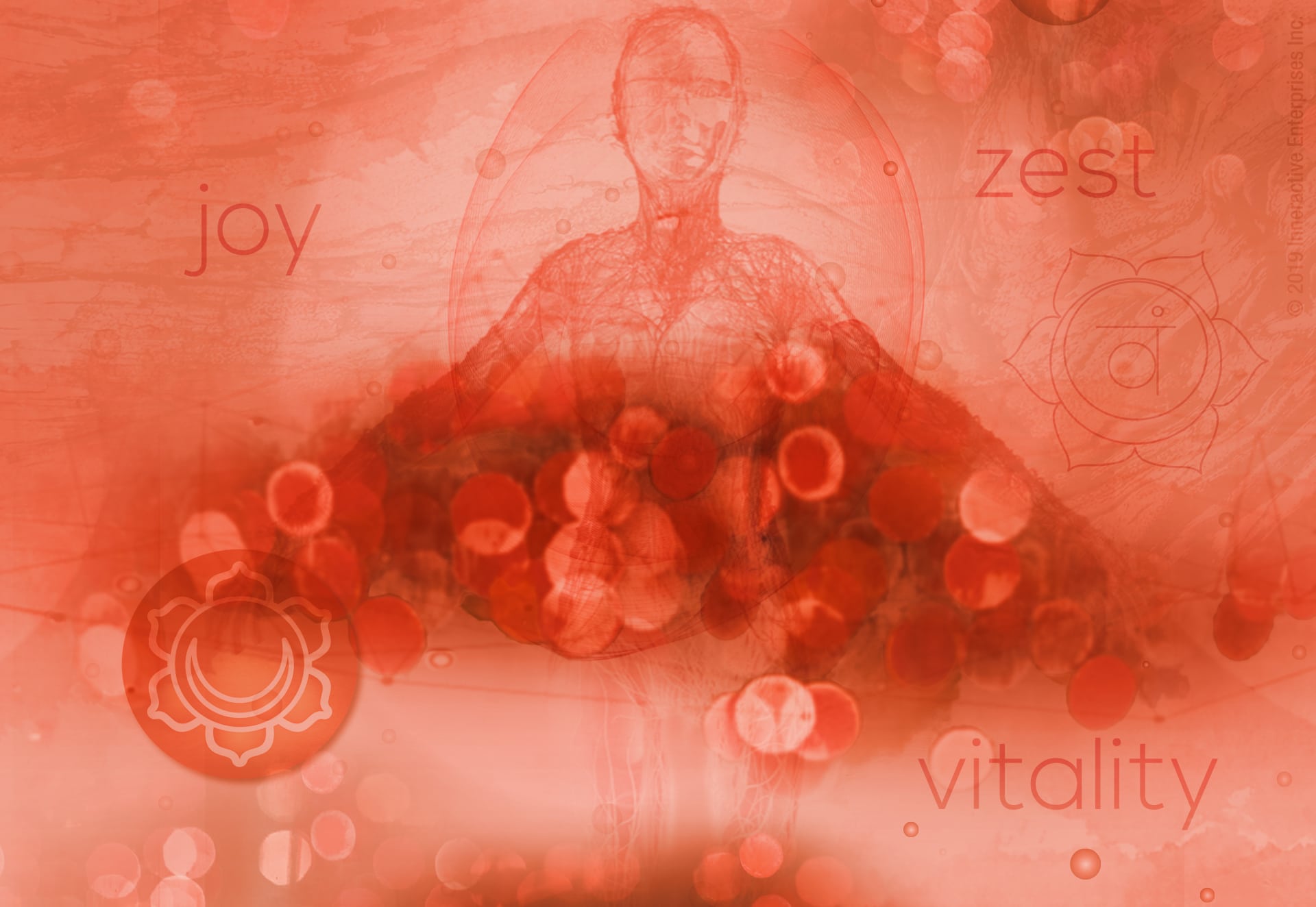
Orange Aura Color Meaning
These are the social butterflies of the aura color spectrum. Orange-dominant people love being in the company of others, and are often described as gregarious and generous.
Orange aura individuals are often people-pleasers who are kind, honest, and charming. They are great gift givers because they are so in tune with the thoughts and feelings of others. Additionally, they possess a disarming quality that puts others at ease.
They’re also known as daredevils who seek out the fun in any situation.
Orange Aura Weaknesses:
Orange-dominant people can be easily angered and impatient. They may rush into projects or relationships too fast without thinking them through. Their method of operation is often to act first and then deal with the consequences later.
If you find yourself in the company of someone with an orange aura, however, you can join them on their adventure in the fast lane—or simply be passed by.
Those with orange auras often have an obsessive nature when pursuing new interests and hobbies. This obsessiveness paired with risky behaviors can be a problem, especially when it comes time to make important life choices.
Orange Aura Strengths:
On the positive side, those with orange auras are very quick to forgive and do not hold grudges. They also tend to be very optimistic and have high levels of determination—they live life like every day is their last.
They make good leaders because they are natural people magnets. Orange-dominant people will do well in many positions in the workplace, but because of their courageous nature, they often go into careers that are higher risk, such as the military or firefighting.
Variations of orange auras:
- Bright Orange: healthy, vibrant
- Red Orange: lots of self-confidence
- Orange Yellow: perfectionist qualities, attention to detail
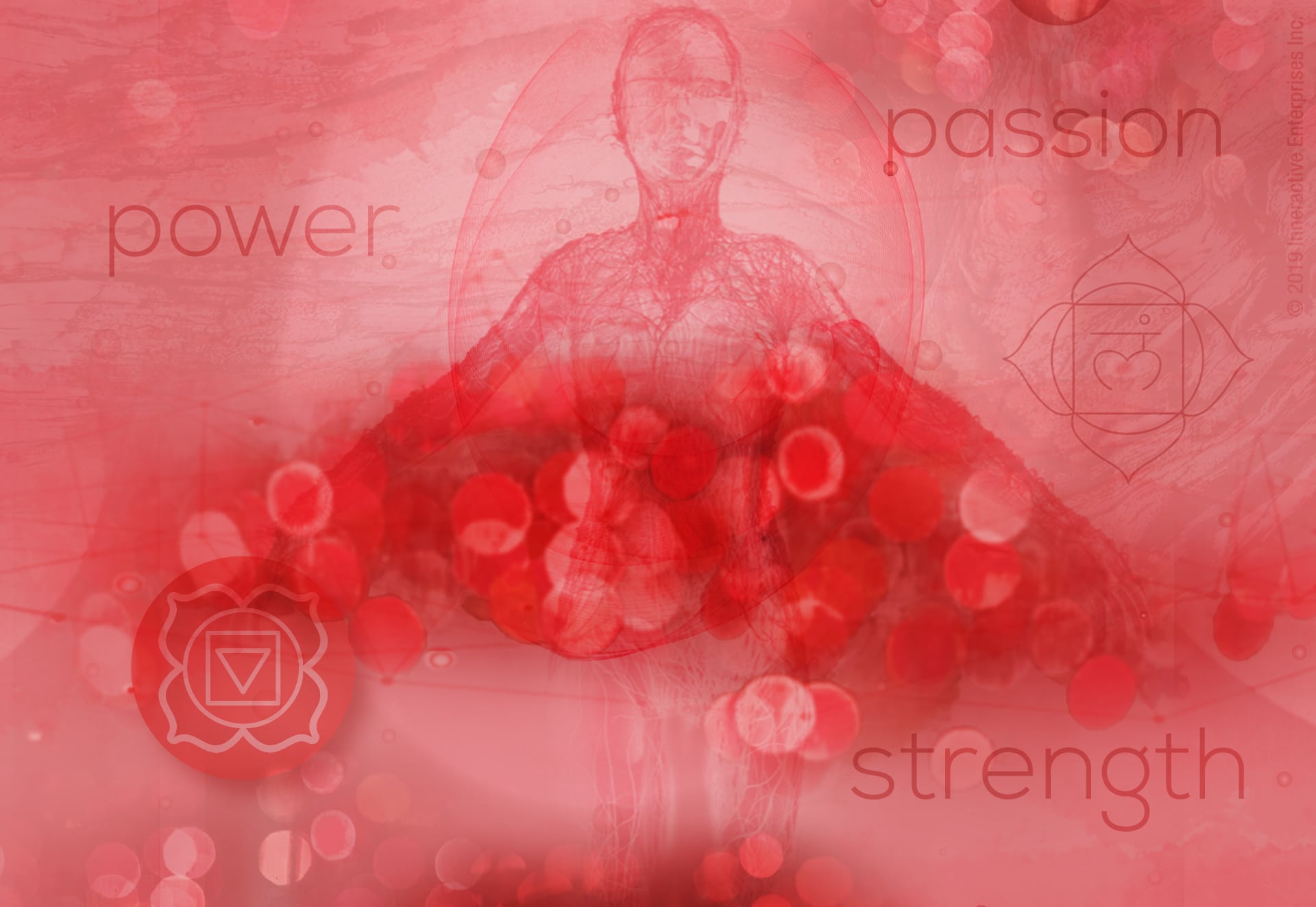
Red Aura Color Meaning
The color red immediately conjures up very specific images: red roses, blood, cherries, passion, vitality… the list goes on. An individual with a red aura values things they can touch, see, taste, and hear.
A red aura is associated with the first, most primal chakra. That’s the root chakra. The most foundational aspects of our primal needs are governed by this chakra. So, if your aura is red, there is a likelihood your root chakra is dominant.
Red auras are very grounded in the material world. They value physical connections. Those with red auras tend to be enthusiastic, energetic, and adventurous.
Red auric individuals love exploring different places and they have a bold approach to life that matches the intensity of their aura color. Their sense of adventure isn’t limited to travel, either! They’re also adventurous when it comes to food and sexual partners.
However, people exhibiting red auras can have certain negative tendencies, too. That lust for life can easily be channeled for the wrong reasons and lead them astray.
Red Aura Weaknesses:
Reds tend to be dynamic personality types, but they may also be prone to anger issues. They’re competitive and individualistic. So, they need to be work in situations that allow them to either act alone or be in charge of others. Without this freedom, they can become overbearing.
Because of their adventurous nature, those with red auras may become bored very easily. This quality makes it hard for them to actually finish projects they start because they often lose interest halfway through.
In relationships, reds can confuse lust for love, so it’s advised that they ease in to intimate relationships to avoid serious conflict and hurt emotions. Red-dominant people also tend to get jealous easily and can fixate on negative thoughts, especially when things don’t go their way.
Red Aura Strengths:
Reds are generally very strong both physically and mentally, with a courageous and ambitious personality many people admire. Applied to the right workplace, this can mean that an individual can have a very successful, fruitful career. This is especially true if he or she is placed in a leadership position where the individual can truly shine.
One of the most positive features of these strong personalities is that they are direct and to-the-point. Red auras mean what you see is what you get—there is no hidden agenda. They’re self-assured and not afraid of taking risks; if you’re friends or partners with an individual with a red aura, life will always be an adventure.
Variations of red auras:
- Dark Red: centered, grounded, self-sufficient
- Bright Red: passionate, sexual, compassionate
- Cloudy Red: angry, negative, past trauma
- Pink: loving, affectionate, intuitive
- Dark Pink: dishonest, immature
What Color is My Aura?
At this point, you may be wondering, “What color is my aura?” It is natural to be curious about your own aura. After all, the colors of your aura may reveal deeper self-understanding and give you a sense of peace. So, how do you go about deciphering your aura colors?
The first step is knowing how to read your aura. Check out our guide on how to read auras for a more in-depth explanation. It is beneficial to check your aura colors on a regular basis to make sure all frequency levels are balanced and healthy. If you have a disturbance in your aura, it might appear differently. For example, the colors could be more muted or muddied instead of clear and bright.
Using Inneractive’s aura photography equipment, you can glean detailed insights into your aura—including an advanced interpretation of the colors within it. Our aura camera uses a system of dermo-electrical inputs transformed via proprietary algorithms into a digital representation of what your aura may look like.
Why is this helpful? If you learn that you have an imbalance, you can learn how to correct it to a achieve a healthier, happier sense of self.
An Afterword on Aura Colors
Auras are an extension of the self. They project your spiritual state into the world as an energy field. Our aura camera photography can help you gain insight into a representation of your aura portrait.
Auras are an intangible but important part of understanding the more spiritual, divine aspects of the self. Each color of your aura—in addition to the quality and intensity of the hue—is imbued with specific meanings that reflect the different levels of the self. Using this knowledge, you can determine how to better balance your strengths and weaknesses, and cultivate a healthy life devoted to positive personal growth.

